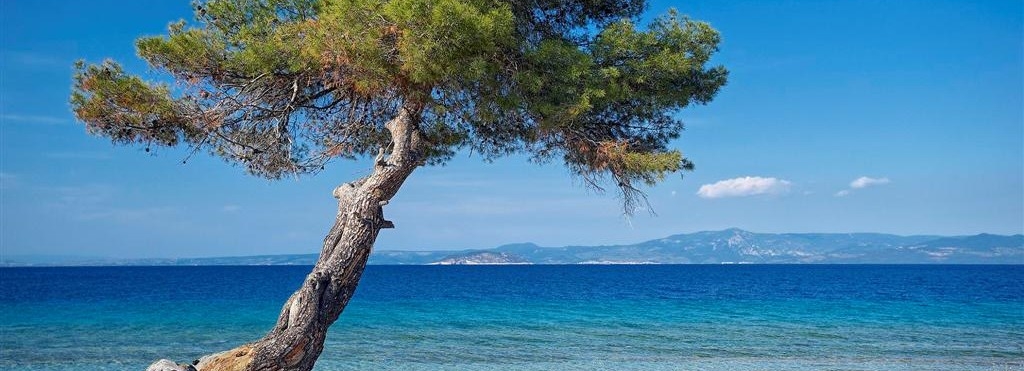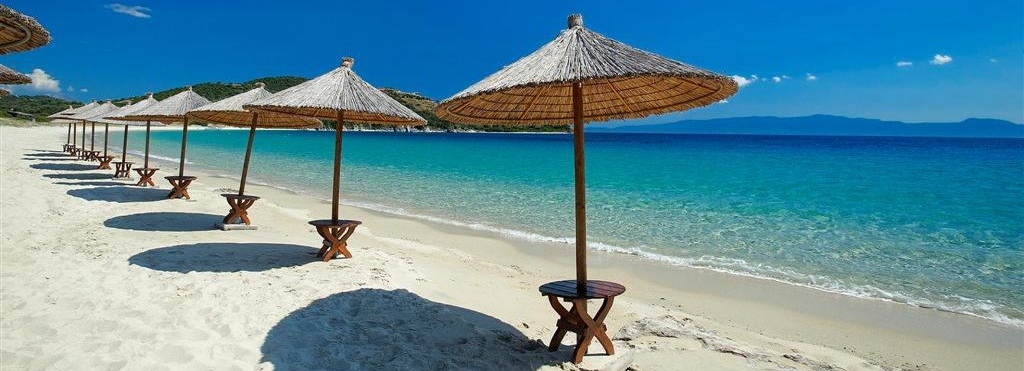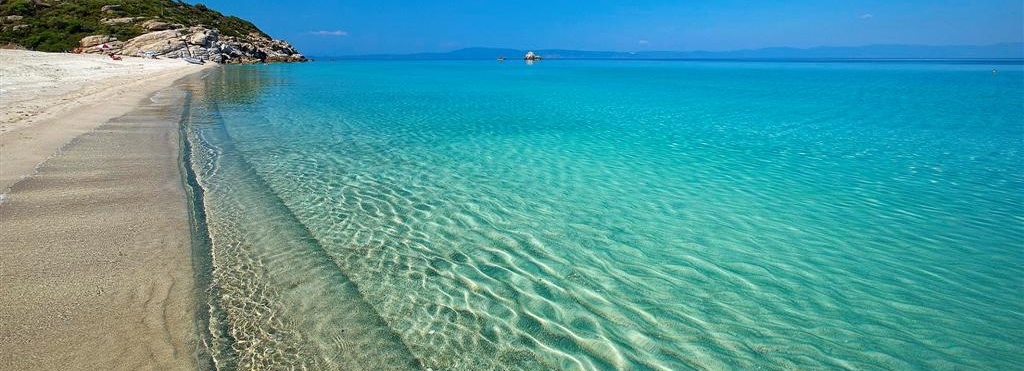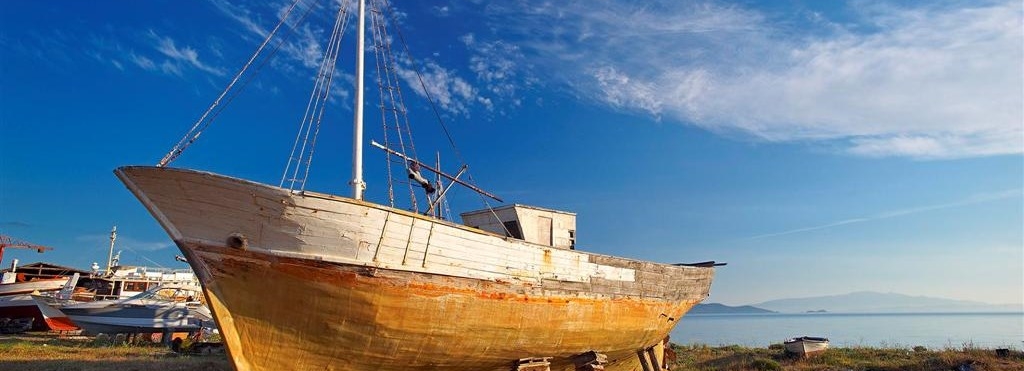Super User
Cells
Tradition dictates that, as a rule, three monks may inhabit a cells and permits up to three monks on trial. Head of the cell is the Elder to whom the monastery has surrendered the cell with a special administrative act and the corresponding instrument which is called a promissory note. The cell is surrendered for life, with its corresponding plot, against a price that also secures successor rights. Succession is established by the registration in the promissory note of the names of three monks. After the elder dies, head of the cells becomes the second, in order, monk, paying to the monastery the so-called tertiary-share.
Sketae or Sketes
Sketae are communities of monks, historically established in the greater geographic area of certain monasteries and only after the permit of the cardinal monastery, certified by Patriarchic sigil. Eight of them, with the traditional communal way of organization, are settlements made of huts with a religious and community life center, the Kyriakon (for Sunday). The Kyriakon is complemented by the Refectory, the Guest Quarters and the Library. Head of the monks in a skete is Dikaios who is elected by the convocation of Elders. His term lasts for one year and he manages the affairs of the skete with a committee of two councilors. All of this refers to the traditional, idiorrhythmic sketae, the four coenobic sketae which were erected in the 19th century in the form of a monastery complex are coenobitic. Dikaios serves for life and their building organization has the great monasteries as its model.
Athonias
On the southwestern wing of the complex of the Skete of St. Andrew near Karyes operates today the Athonias Ecclesiastical Academy, or Athonite Academy. The Academy was inaugurated in 1749, following an initiative by Patriarch Cyril the V. It had originally been housed in a building constructed specially for this on a hill near Vatopedi monastery. That complex included of 170 cells, Refectory, Chapel, Library and teaching halls. It was a highest educational academy under the corresponding Patriarchic Sigil. St. Cosmas of Aetolia and Athanasius Parios had both graduated and taught there. It ceased to operate in 1809 and reopened its doors in St. Andrew’s Skete as an ecclesiastical academy and orphanage in 1930.
Athonias Ecclesiastical Academy
Tel. 23770-23200 Fax 23770-23341
Dafni
Dafni is Karyes’ heaven. In ancient times it was the sanctuary for Apollo of Danfi. Around 1044 the monastery of Docheiario was established here, but it soon was deserted due to frequent pirate raids and subsequently moved to its present day location. Throughout Mt. Athos’ history, Dafni was and continues to be a key reference point for the movement of both pilgrims and monks. The only bus in Mt. Athos leaves from Dafni to follow the route to Karyes and the bay of the monastery of Iviron. The small settlement of Dafni is comprised of various public buildings, serving the pilgrims such as the port authority, customs office, post office, police precinct and other buildings housing a restaurant, a hotel, groceries, where one can also find ecclesiastic goods and souvenirs, as well as warehouses and laymen houses. Most of the buildings in Dafni date from the 19th century, a period where there was frequent arrivals of ships, mainly from Russia. Recently due to the increased needs, the old pier was widened and a second one was constructed. Most of Dafni belongs to the territory of Xiropotamou monastery, while its southern part belongs to Simonos Petra. The border between these two monasteries is a natural canal where the mountainous torrents used to empty their waters. The beautiful verdurous slopes which rise from the bay combined with the colors of the sea, paint a very tranquil ambiance, disrupted only during the disembarkation of pilgrims and goods.
Protaton
The church of Protaton is the oldest Catholicon in Mt. Athos and is dedicated to the Dormition of the Virgin. It was probably erected during the first half of the 10th century, renovated in the era of Andronicus Palaeologos, while restoration works were also undertaken in 1955, where a square was created in the place of the cells adjacent to Protaton, to promote the latter. It differs from the Catholicon of the monasteries on Mt. Athos in being a triple-aisled basilica with an elevated middle aisle, that permits the third row of openings on its perimeter. Its present day form combines the type of the basilica, with respect to its roof, with a cross shaped ground plan. Its interior stands out for four pessaries divide the cross-shaped church into a central space with corner rooms. The church is adorned with awe inspiring frescoes, dating from the 14th century, and painted by Manuel Panselinos, the key representative artist of the Macedonian School, while its icon screen, or templon, is marble and a well preserved expression of old Byzantine icon screens. Kept on the synthronon in the Holy Bema is the miracle working icon “Axion Esti”, which dates, according to tradition, back to the 10th century and is the symbol of the Holy Mountain. The church has two narthexes which date from the early 16th century, one on its western side in the form of a adit and another on its northern side, where there is a cenotaph for the monks who were slaughtered by Catalan pirates in the 14th century. The bell tower was erected in 1534 by Seraphim and later renovated. In the tower of Protaton there is a library with 117 manuscripts, of which 47 are parchments. Kept in its archive room is the 1st Typikon (liturgical book) for Mt. Athos by Emperor John Tzimiskes, also known as “billy goat” for it is written on billy goat skin and constitutes the most historic text in this land.
Karyes
Roughly in the middle of the peninsula of Athos and on its northern side we find Karyes, the amphictyonian center of the monastic state. This settlement is built in a verdurous environment. Its prime reference point is the church of Protaton, dating from the 10th century, the icon of Axion Esti and Panselinos’ frescoes, the tower of the church, the building of the Holy Community, nineteen houses (delegacies) of the monasteries, for all of them except for the one closest to Karyes, the monastery of Koutloumousio. Here one can also find the Governor’s building, subsumed to the Greek Ministry of Foreign Affairs (http://www.mfa.gr/ ), a Police Station, an Infirmary, Post and Telegram Office, a tailor shop, a bookstore, groceries and other shops and workshops. There are more than 50 cells in the greater area of Karyes, many of which are of particular historic importance, such as that of the Ravdouhos, a cell dating from the 10th century, and of Fournas. Karyes were founded in the 9th century when many monks moved in the area establishing Lavra in Karyes. Lavra in Karyes was acknowledged the first amongst all monasteries at that time and its Prior was named Protos (the First) in the Holy Mountain. During the Ottoman rules and dictated by the prevailing conditions most of the land and attachments of Lavra in Karyes and Protos were transferred to the other monasteries on Mt. Athos. Today these institutions are preserved in the form of the Holy Community and Holy Administration, led by the Head Custodian. The monks constituting the Holy Community are the representative of the twenty monasteries – and reside in Karyes.
Agiou Pavlou Monastery (St. Paul’s Monastery)
FOURTEENTH MONASTERY
Near Dionysiou monastery, on the west side of Athos and close to the sea, inside an impressive gorge formed by the tall adjacent peaks we find Agiou Pavlou Monastery. According to tradition, the monastery was erected at the end of the 10th century by Paul of Xeropotamou, contemporary of St. Athanasius the Athonite, a spiritual man and hermit, the founder of Xeropotamou monastery. It is possible that Saint Paul retired from Xeropotamou monastery in some small cell in the area that gradually evolved to Agiou Pavlou monastery. The monastery will follow its own course and two centuries after its foundation, and possibly due to its desolation, will be demoted to a cell, thus losing the title of the cardinal monastery. In 1370 it will be relinquished to two Serbian monks, Gerasimus and Antonius who will painstakingly restore it back to its former dominant place. From then on and until the Ottoman rule the monastery will be assisted by Byzantine Emperors and Despots, as well as Serb rulers. Among its benefactors we also find Christian Princess Mara, daughter of Branković, wife of Ottoman Sultan Murad II and mother of the conqueror of Constantinople, Mehmed II. Mara who kept, despite her marriage, true to her Christian faith, will donate money and dependencies to the monastery and later, after Constantinople fell, will bestow the gifts of the three magi upon the monastery, a holy relic and Turkish loot from the fall. The history of the monastery follows closely that of the other monasteries. It will suffer hard from raids and heavy taxation during the Ottoman rule. It will also succumb to fires and floods, all of which will bring it to a desperate financial state. The monastery will find solidarity in the rulers and believers of the countries on the banks of Danube and the greater space of Hellenism, who supported it financially and assisted it in expanding its building installations. The library of the monastery is home to 508 manuscripts, 14.000 printed volumes and several golden bulls, led bulls and patriarchic sigils. Worth noting amongst its many heirlooms are a piece of the True Cross, part of the gifts by the Biblical Magi and various icons, of great historic and artistic value. Its Catholicon venerates the Presentation of Chris at the Temple and celebrates on the 2nd of February.
Simonos Petra Monastery
THIRTEENTH MONASTERY
The monastery stands 300 meters above the sea on a huge rock, on the southeastern coast of Athos peninsula, just past the port of Danfi, Mt. Athos’ most daring building. Simonos Petra, or Simonopetra (literally “Simon’s Rock”), monastery was founded by Simon the Athonite who was a monk in Athos in the 13th century and initially named the monastery “New Bethlehem”. The monastery’s key and principal benefactor was Serbian despot Jovan Ugljesa, who in 1362AD funded the renovation and expansion of the monastery. The monastery was hit hard by fires in 1580 and 1622 and as a result was in total desolation in early 17th century. In 1762 Russian monk Paisius Velichkovsky stayed in the ruins of the monastery and attempted, assisted by other monks, to revive the monastery. Paisius’ stay might has been brief but his work was continued by monk Joasaf from Mytilene. Simonopetra, after having succumbed to becoming idiorrhythmic, the monastery will return to cenobitic organization in 1801, but after enduring the hard years of the Turkish occupation of Mt. Athos, from 1821 to 1830, it was completely destroyed by fire in May 1891. With financial aid from Russia the monastery and its Catholicon were build once more and, despite such frequent catastrophes, Simonopetra flourishes spiritually yet once more with the arrival of new monks from Meteora. The architectural layout of its buildings, due to the limited space, is very different from other monasteries on Mt. Athos. The Catholicon of the monastery is dedicated to the Birth of Christ. Its treasures include pieces of the True Cross, vests, crosses pectoral crosses, icons and many relics from Saints, such as the left hand of St. Mary Magdalene, the foot of St. Dionysus and the head of Holy Martyr Sergius, which bears a small cicatrix due to a strike suffered as he was tortured.
Filotheou Monastery
TWELFTH MONASTERY
Three hundred meters above sea level and half an hour from Karakalou Monastery, amidst a verdurous landscape on the eastern side of Mount Athos there lies one of the oldest monasteries on Mt. Athos, Filotheou Holy Monastery. Tradition mentions that the monastery was built by Blessed Philotheos, contemporary of St. Athanasius, before 972 and was then known as Fteri Monastery. Among the monastery’s benefactors in its first years were Emperor Nikephorus Boteneates and later other Byzantine Emperors of the Palaeologos dynasty. In the 13th century, Serb king Stephen Uros Dusan, known for his help to Athos’ monasteries, will also assist Filotheou Monastery. As a result of this help a great number of monks in the monastery during that era were Serbs. One of the strongest personalities to have served as monks in Philotheou was Abbot Dionysus, in early 16th century, who later founded Dionysus Monastery “on Olympus”. Its benefactors in the 17th and 18th century included the Tsar of Russia Michael and the Greek princes of Danubian provinces, who supported the monastery and allowed monks to run collections in order to raise money. A permanent cause for dispute between Philotheou and Megiste Lavra monasteries were the Cells of Milopotamos and Kravatos, which were contested by both monasteries. Finally at the end of the 16th century and by means of patriarchic sigils these were awarded to Lavra. One of the most important figures of Orthodox monasticism comes from Philotheou monastery, Cosmas of Aetolia. Upon leaving the monastery, Cosmas taught the Gospel to enslaved Greeks, before he martyred in the hands of the Turks in August 1779. In 1900 the Monastery finds itself in a tight financial spot once more, only to be assisted by the Holy Community this time, thus subjecting itself to its custody. From the most remarkable treasures of the monastery is the icon of Our Lady Glykofilousa , which, tradition has it, reached Mount Athos on its own, to escape the wrath of iconoclasm, and the hand of St. John Chrysostom, a gift by Andronicus II Palaeologos. The Refectory is illustrated by Hagiographer Tzortzis from Crete in 1540. The Catholicon of the monastery is dedicated to the Annunciation of the Mother of God and 12 cells build in the surrounding area and a further two in Karyes are subject to the monastery.
Karakallou Monastery
ELEVENTH MONASTERY
Between the monasteries of Megiste Lavra and Iviron and at an altitude of roughly 200 meters above sea level one can find one of the oldest monasteries on Mt. Athos, the Holy Monastery Karakallou. The monastery appears in Athonite documents and Typikon since the early 11th century, the period when its foundation is suggested. But according to the tradition of Mt. Athos, its foundation must be placed much earlier. Based on its name, such traditions hold that its founder was Roman Emperor Marcus Aurellius, also known as Karakallas, who reigned in early 3rd century AD. But the monastery is clearly posterior. With respect to its name, this might be attributed to some monk or Abbot by the name Karakallas, a common byzantine name in that era. This monastery also shared the common fate of the monasteries on Mt. Athos. A period of flourishing was followed, in 1204, by Latin Rule and just after the pogroms by Unificationist Michael VIII. The destruction will be completed by the Catalan raids in early 14th century. Despite such frequent catastrophes, the number of monks living in the monastery will grow, while it will also acquire dependencies and attachments. Important was the help by Vlach ruler Ioannis Petros, who will take his monastic vows there. In the revolution of 1821 Karakallou Monastery will play an active part and after the ten year occupation by the Turks it will become, in late 19th century, a place of quiet for Russian monks. A fire in 1875 destroyed a major part of the monastery, but its Catholicon, a work of the 16th century, survived. It library is home to 300 manuscripts, of which 42 are parchments, as well as 3.000 printed volumes. Its treasures and heirlooms include pieces of the True Cross, pectoral crosses, crosses, Saint’s relics, with the most important being those of Saint Gedeon, who martyred in Tyrnovo, Bulgaria. The monastery celebrates Apostles Peter and Paul. Its Catholicon was erected in 1548 and was illustrated in early 18th century. Its icon screen is adorned with the exquisite icon of the 12 Apostles, a work by monk Dionysius from Agrafa, dated 17222.






